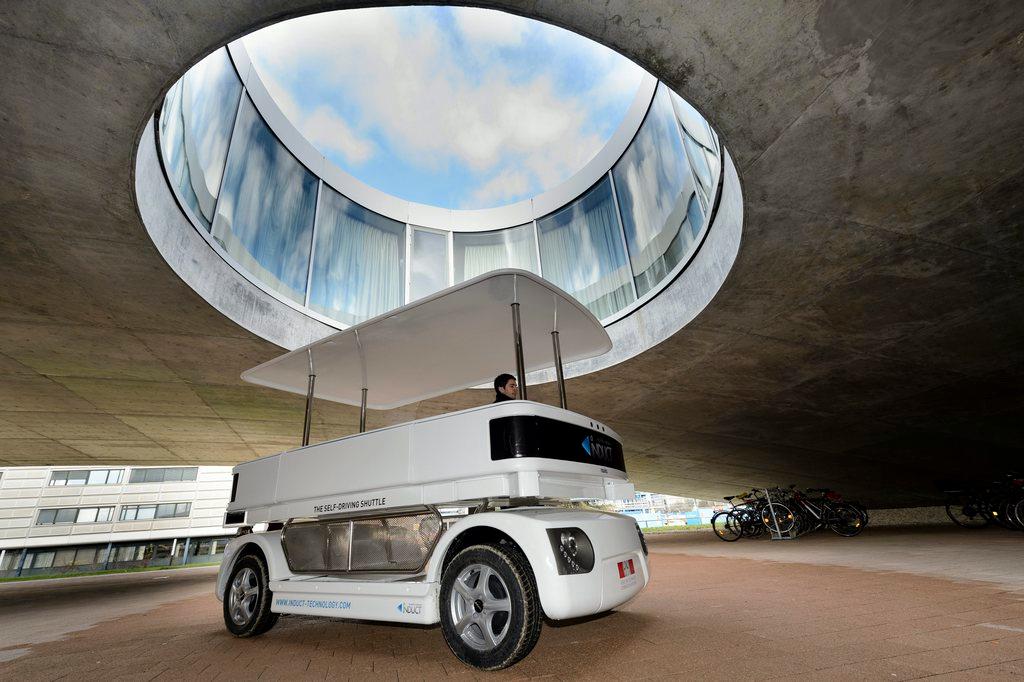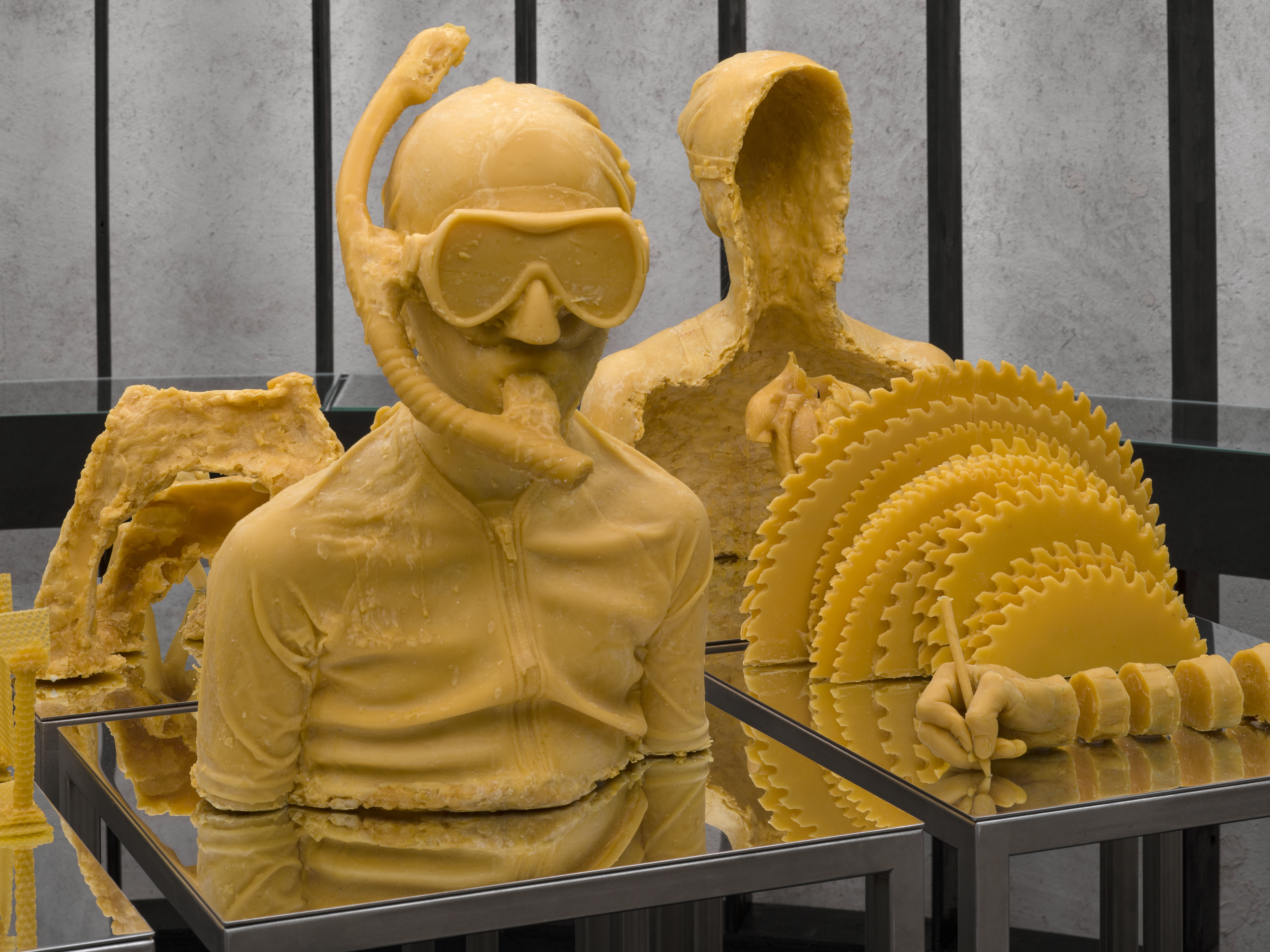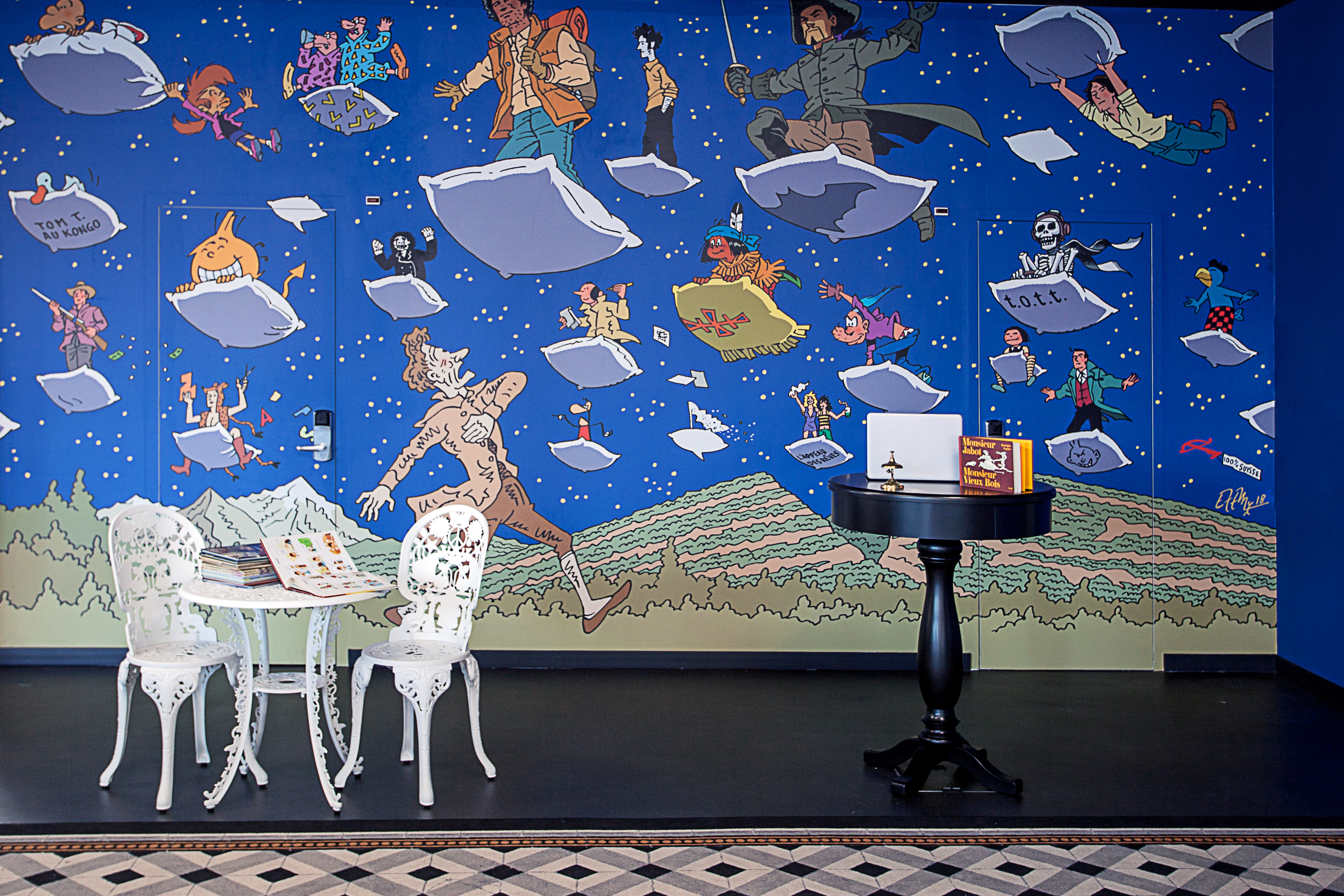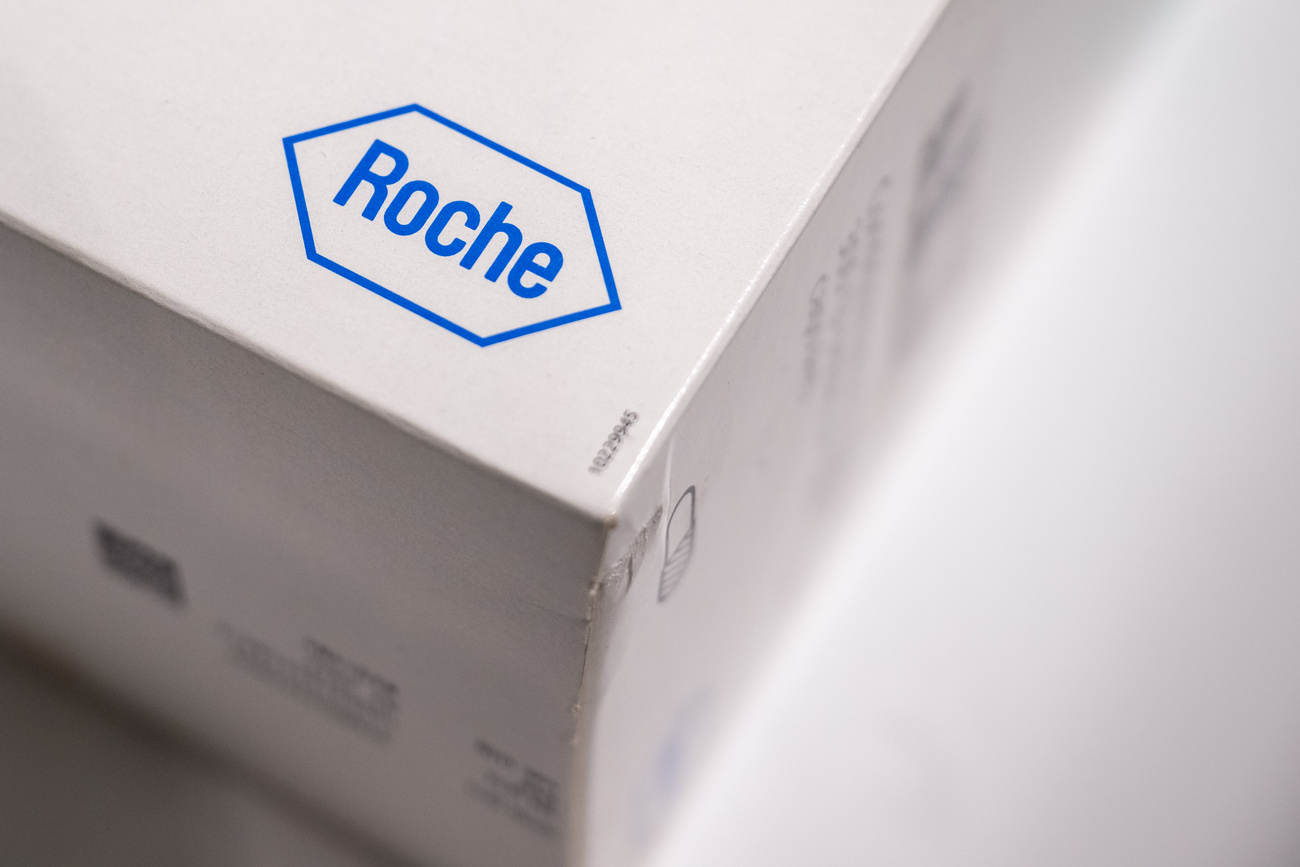
Swiss start-ups forge a path to robots at the wheel

For Claude Florin, the idea of an autonomous car started tragically, when his father was struck and killed by a driver in Geneva. Now his is one of several Swiss start-ups working on the early days of the technology, at a time when the world is still figuring out how vehicles that can drive themselves will evolve.
Back in Geneva on a winter evening, 20 years after that devastating accident, Florin stands in front of an overflowing room, pitching his idea to investors and innovators. They’re gathered for the Swiss launch of MassChallenge, an organisation designed to help start-ups find the money and support to make their ideas reality.
Florin only has a few minutes to make his case, and the presenter cuts him off just before he gets to the story about his father. But the crowd has heard the main idea behind his start-up: making highly sensitive 3D cameras that can see obstacles ahead, at a much lower price point than those currently available.
“You need to give credit to the first companies that proved it was possible, like the Google car,” Florin told swissinfo.ch. “The next evolution was to ask, could you put it in a very cheap car with a cheap device?”
Not so fast
Florin’s start-up, called Fastree3D, is one of several out of Switzerland whose technologies are designed for use in autonomous vehicles. But he and his fellow entrepreneurs say the driverless car won’t be the main way their inventions are used, at least at first.
“We believe that autonomous cars will come somewhat later,” Florin says. “Our short-term focus is automatic guided vehicles in industrial settings – forklifts, supply chains, personal service robots.”
And he’s focusing on using his technology for important developments along the way to a fully self-driving car, like automatic braking, that will help make roads safer and could have saved his father’s life.
Headquartered at the same campus as Fastree3D – Lausanne’s federal technology institute EPFL – Rafael Gindrat’s start-up BestMile makes software to monitor fleets of driverless cars. Before his technology is applied to smaller personal vehicles, it will be used for public transport: specifically small, autonomous post buses that will drive around the town of Sion starting this spring.

More
Let the robot drive, and relax in the back seat
He also thinks it will be a while before we’re riding in the backseat of our car reading the newspaper while it drives us to our destination.
“In ten years I think we will have a lot of autonomous vehicles, at least for public transport, taxi and car sharing services,” Gindrat predicts. “But I don’t know if private citizens will be able to buy one because they will be quite expensive, at least at the beginning.”
From Switzerland to the world
Both Gindrat and Florin see Switzerland and its federal technology institutes as fertile ground for launching projects related to driverless cars, which require lots of support and testing. Out of the 15 Swiss start-ups making pitches at the MassChallenge launch, theirs are both focused on technologies related to driverless cars, and another is working on autonomous vehicles in the agriculture industry. But when it comes to finding a larger market – and investors – for their technologies, the entrepreneurs expect to eventually look elsewhere.
“We are really proud to be based at EPFL and be a Swiss company, but our market is not a Swiss market,” Gindrat says. “It’s not a secret that there’s a lot of money in Switzerland, but we don’t have really large venture capital funds to put money in start-ups. Maybe we’ll have to move the headquarters to America to be closer to our future investors.”
For now, though, Switzerland and Europe are good places for Gindrat to implement his fleet management technology, which is ideal for public transport. Autonomous vehicle tests on this side of the Atlantic have mostly been focused on public transport instead of private cars, as the map below shows.
Although Switzerland already has a well-networked public transport system, Gindrat thinks driverless vehicles could help with late-night access and underserved remote areas.
What’s allowed?
In the United States, where driverless vehicle tests have been more focused on private cars, the country’s main transport and highway safety authority issued a letter in February stating that it would treat driverless systems as legal drivers in future. Though not formal legislation, the move paves the way for wider use of driverless vehicles like the ones Google has been testing in California. But Google’s tests haven’t been without incident – most recently, one of its autonomous cars was at fault in a minor accidentExternal link with a city bus in February.
Switzerland’s laws don’t allow fully driverless cars to operate on public roads, since “a human driver must be in control at all times”, according to Thomas Rohrbach of the federal roads office. Special permission can be granted for carrying out tests like Swisscom’s experiment with a driverless car last year, or the autonomous post bus in Sion.
Rohrbach says Switzerland can’t act alone in changing its laws – European countries will have to eventually agree on international driverless car standards similar to those governing what vehicles can be on the roads today. He thinks that truck transport will be the first large-scale industry to force governments to confront fully driverless technology, because highways are the easiest road situations to navigate.
“The pressure is already on to do something,” Rohrbach says. “Technically anything is possible, that’s no question. Now it’s about making common standards for that technology – like phone chargers, which used to be different for every phone.”
But for now, it’s tech companies leading the charge on driverless cars. Switzerland isn’t in the business of manufacturing the vehicles themselves, with start-ups in France and Germany leading Europe on that front. But Swiss expertise could open doors for entrepreneurs when it comes to providing the surrounding technologies.
“In Switzerland we are really good at setting up and operating transport systems,” Gindrat points out. “So it’s also important to have some start-ups and companies taking part in this new industry and providing what we can do best.”
Driverless cars and the Geneva Auto Show
Major auto industry players like Volkwagen, Ford and Audi have been conducting autonomous vehicle tests for years, and several top executives have promised fully self-driving cars by 2020. Recently, Tesla’s Elon Musk made headlines by saying the company would debut a fully autonomous car in the next two years.
The Geneva Auto Show, underway through March 13, has debuted several cars with self-driving elements, such as models where the car can drive itself – still with a person behind the wheel – on motorways. And the Italian company Ed Design unveiled a prototype of a fully autonomous race car in Geneva which they hope will take part in a major race by 2025.
However, in the run-up to the Geneva Auto Show, Dave Guilford of the publication Automotive News pointed outExternal link that although automakers tout 2020 as a magic year by which cars will be fully autonomous, reality doesn’t support that narrative.
“In terms of automotive product cycles, 2020 is tomorrow,” he wrote.
Contact the author on Twitter: @vdevoreExternal link

In compliance with the JTI standards
More: SWI swissinfo.ch certified by the Journalism Trust Initiative




























You can find an overview of ongoing debates with our journalists here . Please join us!
If you want to start a conversation about a topic raised in this article or want to report factual errors, email us at english@swissinfo.ch.